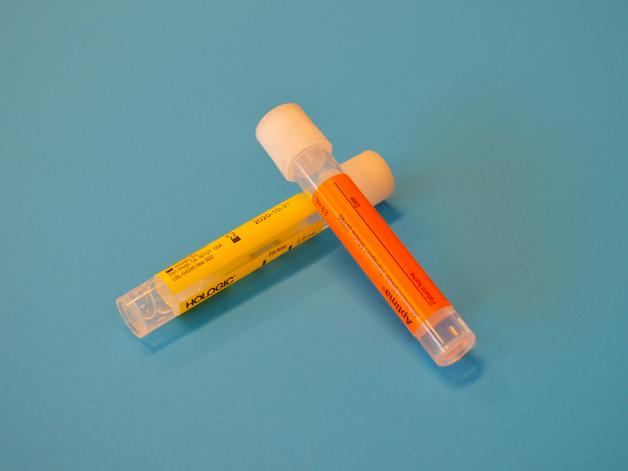The approach of a due date is often accompanied by a cocktail of anticipation, mild worry, and endless curiosity: will everything start naturally, or will there be a recommendation for induction of labor? For many parents, these conversations are loaded with emotion—sometimes hope, occasionally apprehension, frequently a blend of reassurance and unanswered questions. The idea of artificially launching labor, rather than waiting for nature to take its own course, can prompt a barrage of queries: “Is this best for my baby?” “Will it change my birth experience?” Here, let’s unravel the ins and outs—why induction of labor might be advised, how the process unfolds, safety steps, choices in pain relief, what the latest evidence says, and, very importantly, what you might feel. Expect practical facts, a gentle touch on the emotional side, and an emphasis on shared decision-making at every stage.
Reasons for Induction of Labor: When and Why?
A baby’s well-being. The expectant mother’s health. The passage of time. So many factors come together, sometimes making a wait-and-watch approach less suitable. Induction of labor—initiating uterine contractions through medical methods—may be considered under several scenarios:
- Post-term pregnancy: Once 41 or 42 weeks flutter by, the placenta may start to age—a process doctors call “placental insufficiency”—raising the potential for complications.
- Maternal conditions: Elevated blood pressure, gestational diabetes, or preeclampsia can make prompt birth safer for the mother, sometimes the only way to lower health risks.
- Fetal growth restriction: Occasionally, the little one’s growth plateaus or ultrasounds show low amniotic fluid. Induction of labor can offer timely intervention for such situations.
- Premature rupture of membranes (PROM): When the water bag breaks but contractions are nowhere to be found, waiting could open the door to infection—so timely induction of labor is frequently advised.
- Practicalities: Some unique contexts—previous medical history, distance from the hospital, or family needs—may influence the timing too.
Doctors will weigh up the Bishop score (a medical rating of cervical “readiness”), alongside maternal and fetal indicators, before any recommendation. So if your practitioner brings up this score or talks about “cervical ripeness,” it’s all about finding the safest route for both of you.
Preparation and Medical Assessment: What Happens First
Before deciding on induction of labor, a detailed assessment occurs—think of it as a thorough safety net. Blood pressure readings, fetal heart rate monitoring, ultrasound checks for amniotic fluid, blood tests for infections or clotting problems, and (sometimes less-than-comfortable) cervical exams to determine dilation and consistency.
Communication flows both ways. Medical teams will explain the reasons, walk through methods of induction—prostaglandins, mechanical balloons, oxytocin, and more—and detail any potential risks or alternatives. Only informed consent—your full understanding and agreement—allows the process to move forward. You might wonder, “Can I say no?” Absolutely. Your questions and preferences matter. Ask freely.
Methods of Induction: Tools and Techniques Explained
One of the biggest concerns for parents? “What will actually be done to induce labor?” Let’s untangle the options.
Medical Approaches
- Prostaglandins: Special gels or pessaries placed near the cervix can help it soften and start to open, sometimes triggering early contractions. These require monitoring for any signs of excessive contractions (what’s called “uterine hyperstimulation”).
- Oxytocin infusion: This synthetic hormone flows through an IV drip. Midwives or doctors control the dose and increase it gradually, aiming for strong, regular contractions—always closely watched.
- Membrane sweeping: During a vaginal examination, a gentle sweep detaches the membranes just inside the cervix. The goal? To nudge the body’s own hormone release.
- Mechanical methods: A Foley balloon catheter, placed into the cervix and inflated, gently encourages dilation—sometimes chosen for those with a prior lower-segment caesarean section.
- Artificial rupture of membranes (Amniotomy): Once the cervix is favourable, this involves carefully breaking the waters under supervision.
Complementary and “Natural” Ideas
You might hear suggestions like walking, nipple stimulation, or eating dates. Some parents find acupuncture, relaxation therapies, or even osteopathy deeply soothing while waiting for contractions—but always consult your care provider before trying these approaches, as safety matters most.
- Physical activity: Walking or changing positions may sometimes trigger contractions in a gentle manner.
- Herbal remedies and teas: While tempting, these should be discussed with a doctor—many such options lack thorough testing.
- Medical guidance is key: Anything not directly recommended by your care provider should be approached thoughtfully.
Safety, Monitoring, and Predictors of Success
Every decision around induction of labor is underpinned by safety and careful observation. Expect vigilant monitoring:
- Continuous electronic fetal monitoring: Your baby’s heart rate patterns are tracked, offering real-time reassurance as labor progresses.
- Maternal checks: Blood pressure, temperature, contractions—all watched regularly, adjusting care if needed.
- Adjustments to the plan: If there’s sign of stalled labor or the baby’s wellbeing changes, plans can change too, sometimes moving toward caesarean for safety.
Certain factors can predict how likely induction of labor is to succeed: a high Bishop score, prior natural births, and the body’s natural tendency to contract all play a role.
Pain Management and Comfort
Labor pain is no easy topic—”Will it hurt more if I’m induced?” Often, induced contractions do come on stronger and quicker than spontaneous ones. Yet comfort and pain relief options are many:
- Epidural analgesia: Renowned for robust pain control, especially in stronger labors.
- Alternatives: Warm water baths, gentle massage, breathing techniques, relaxation exercises, and positioning changes can all help.
- Support is not just medical: Trusted companions, calm environments, empathetic staff—each matters enormously in shaping your experience.
Let’s not forget, your voice is important: sharing your comfort preferences changes how care is tailored.
Emotional and Mental Wellbeing
The emotional landscape of induction of labor is anything but straightforward. Some parents breathe a sigh of relief—labor’s beginning, the wait is over! Others struggle with worry, disappointment, or expectations shifting quickly as plans evolve.
- Prenatal workshops: Safe spaces to learn coping strategies for pain, anxiety, and unexpected changes.
- Relaxation and mindfulness: Breathing exercises or simple meditation can re-anchor a sense of control (even brief moments can be powerful).
- Psychological support: Sometimes, just talking openly with staff makes all the difference. If emotions become hard to manage, seeking professional help is a strength, not a weakness.
Risks and Possible Complications
While modern obstetrics emphasizes safety, every intervention holds some potential for side effects. Realistic awareness—not worry—is the healthiest stance.
- Uterine tachysystole: Overly frequent or intense contractions, most commonly from prostaglandin use.
- Infection: If the membranes are ruptured for a long time, the entry for bacteria is open—continuous monitoring detects even subtle warning signs.
- Failed induction: Occasionally, the cervix simply won’t dilate—the need for caesarean delivery then arises.
- Hemorrhage: Increased risk of postpartum bleeding can occur, so post-birth care is attentive.
- Uterine rupture: Exceptionally rare, but staff are trained to react at the first sign, especially in those with previous uterine surgery.
- Fetal distress: Any drop in the baby’s wellbeing can shift the plan toward immediate action.
When Induction May Not Be Suitable
Absolute contraindications include conditions like placenta previa (placenta covers the cervix), certain breech or sideways baby positions, or prior classical (vertical) caesarean scar. A deeply individualized review determines what’s safe—a broad, open conversation where your history and preferences are front and center.
Alternatives and Complementary Approaches
Sometimes the best path is a conscious pause. If there’s no urgency, expectant management—careful watch with regular checks, close monitoring, and trust in the process—may be suggested.
Acupuncture, yoga, osteopathy—used judiciously and under supervision—can help maintain calm while waiting, though always discuss with your care provider before integrating complementary therapies.
Recovery and Support After Induction
The journey doesn’t pause with birth; recovery brings its own physical and emotional shifts. Induced labors, sometimes longer or more intense, can mean extra fatigue, minor aches, and even emotional swings.
Support comes in many forms:
- Postpartum check-ups: Monitoring physical healing, mood, and energy returning.
- Breastfeeding support: Quick access to lactation consultants or peer support groups can ease challenges.
- Counseling for emotional wellbeing: Post-birth lows or feeling overwhelmed are not rare—timely support builds resilience.
- Community resources: Family, neighbors, professional helplines, and digital tools are all invaluable. If ever in doubt, seek help—there is strength in community.
Consent, Parental Rights, and Best Medical Practices
Your autonomy shapes every part of the process. Only after thorough explanations—what induction of labor involves, why it’s advised, the methods, the risks, the possible alternatives like expectant management—does anything move forward, always needing your agreement.
Leading recommendations from WHO, obstetric authorities, and healthcare guidelines are clear:
- Only evidence-based techniques—prostaglandins, oxytocin, mechanical balloons—with continuous evaluation.
- Individualized care tailored to maternal-fetal context.
- Your right to information, clear communication, and active involvement in care decisions is protected, always.
- Multidisciplinary teamwork ensures reliability and calm even if the unexpected unfolds.
Checklists, digital monitoring, team briefings—modern safety steps support your journey with precision and empathy.
Key Takeaways
- Induction of labor can be recommended for overdue pregnancies, medical conditions, or fetal concerns, focusing always on safety and positive outcomes.
- Multiple induction of labor techniques are adapted to individual situations, grounded in research and regular monitoring.
- Cambridge-level assessment tools like the Bishop score help guide decision-making and predict potential success.
- Pain management is negotiable—options exist for everyone, and emotional support makes a tangible difference.
- Risks are explained clearly, and your informed agreement is never skipped.
- Recovery needs kindness, resources, and sometimes extra attention to emotional health—never hesitate to ask for help.
- Your rights, preferences, and birth plan are respected, not sidelined.
- For personalised guidance and free child health questionnaires, explore the application Heloa.
Questions Parents Ask
Can I eat or drink during labor induction?
Naturally, you may wonder about food and water. Many hospitals allow a light meal before induction of labor starts, particularly in early stages. When things get more active, or if there’s a possibility of caesarean, clear fluids or ice chips might be all that’s permitted. It’s always best to confirm with your care team—they understand both your comfort and the potential for unexpected surgical needs.
How long does labor induction usually take?
A seemingly simple question, but the answer varies greatly. For some, induction of labor stirs up contractions within a few hours—especially with a favourable cervix. For others, there could be a day (or longer) between initial steps, like cervical ripening, and the start of strong labor. Body response, method used, and your unique situation all shape the timeline. Feeling impatient? Totally understandable. Keep asking your care team for updates—they’re ready to explain every stage.
Will labor induction increase the risk of needing a caesarean birth?
A genuine concern. Evidence suggests that if the cervix isn’t very favourable (low Bishop score), the chance of needing a caesarean might be a little higher after induction of labor. However, meticulous assessment, method selection, and vigilant monitoring help keep risks as low as possible. Every situation is different—your care team weighs up all factors to support the safest route to birth for you and your baby.
For further personalised support, resource recommendations, and interactive health tools, consider downloading the application Heloa.
Further reading:









